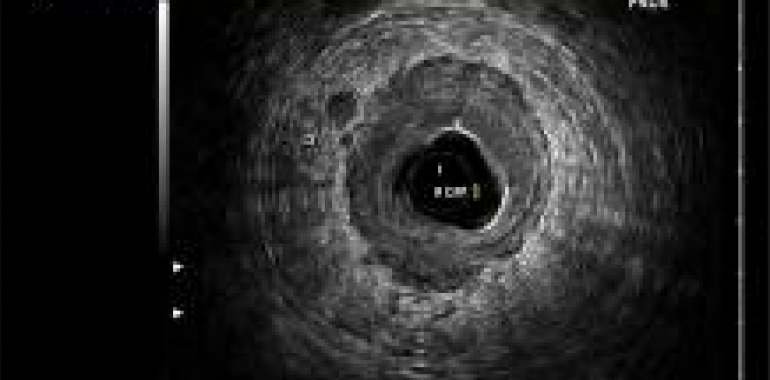
The impact of EUS to predict lymph node metastasis in patients with rectal cancer: a difficult challenge.
Vannelli A1, Poiasina E, Battaglia L.
Abstract
OBJECTIVE:
Current trends in the management of rectal cancer, identify accurate local assessment of positive lymph nodes (LN), as the strongest predictor for stratifying patients who would benefit from preoperative therapy. We a present retrospective analysis of a prospective data collection, to determine the clinical concordance between the suspicious LN at the pre-operative EUS (uN) and a post-operative EUS detection (pN).
PATIENTS AND METHODS:
From March 2009 to March 2011, 31 patients with suspicious LNs at EUS (uN positive) were enrolled. The surgeon performed pre-operative EUS and directly in the operating room, an ex vivo EUS of the specimen. The immediate mesorectal LN sampling by the surgeon was delivered to the pathologist. Endosonographic staging was compared to postoperative pathological staging.
RESULTS:
Preoperative EUS identified 67 suspicious LN. The LN medium size was 6.8 mm. We repeated the EUS after surgery. The pathologist found 41 positive LN. The definitive LN medium size was 6.3 mm. Eleven LN presented the same size between ultrasound and pathological examination, 11 LN a smaller size and 41 a bigger size, the remnants 4 were not discovered. EUS LN staging presented 83.9% in overstaging and 3.2% in understaging. Although endo ultrasonography (EUS) is a very effective method for assessing LN metastasis, this is still a difficult challenge. Inaccurate assessment of LNs can conceivably lead to either under-staging or over-staging. The present study indicates that the clinical concordance between the suspected metastatic LN at the pre-operative EUS (uN) and a post-operative (ex-vivo) ultrasound LN detection, is moderate.
CONCLUSIONS:
We should re-consider all this strategy: we need to switch from morphological information to biological behavior.
(Fonte: Eur Rev Med Pharmacol Sci. 2015 Dec;19(24):4766-4773.)

